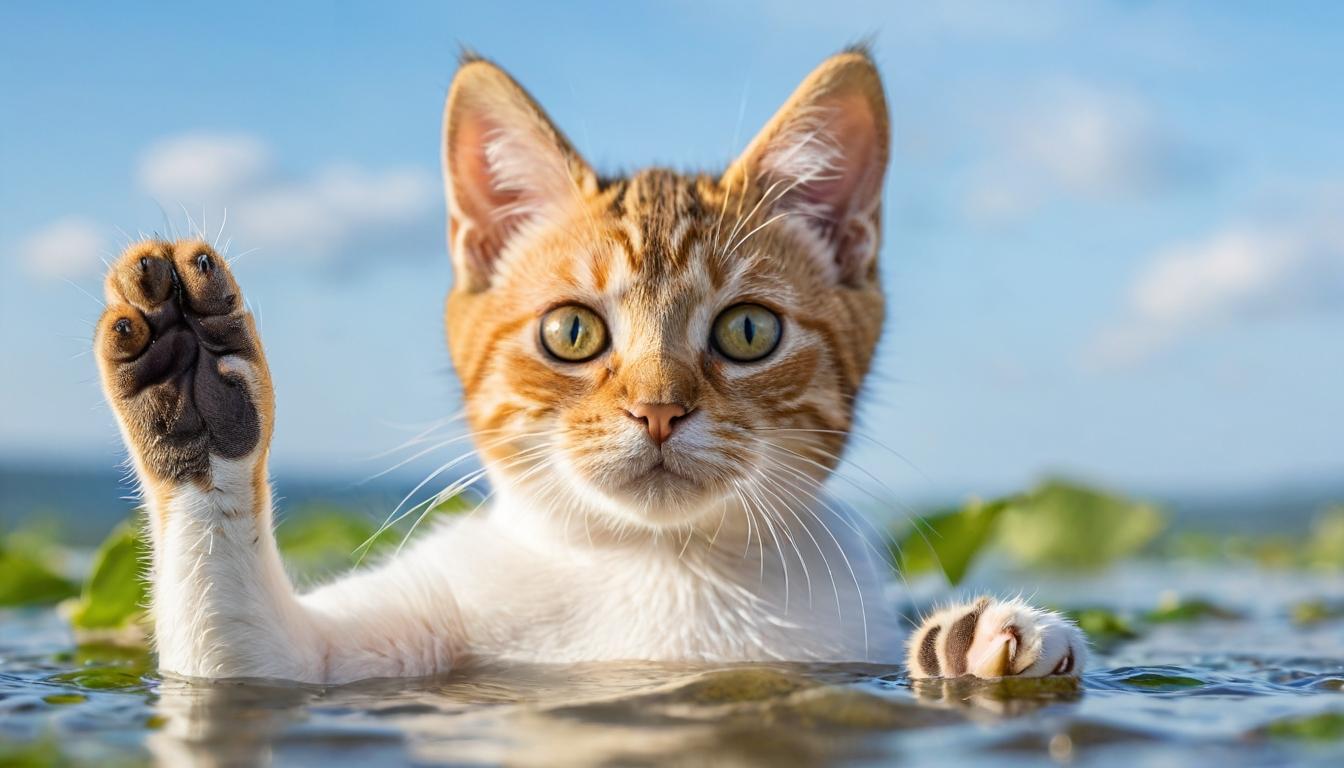You've probably never given much thought to why your fingers wrinkle in water, assuming it's just what happens when skin gets wet. But the truth reveals something far more fascinating about human evolution. Researchers discovered that wrinkled fingers actually serve a purpose—they act like tire treads, improving our grip on wet objects. This isn't random water absorption but an active nervous system response that helped our ancestors gather food from streams and wet vegetation. The wrinkles form in specific patterns that channel water away, creating miniature drainage systems at our fingertips. This evolutionary advantage persists even though most of us now gather food from supermarket aisles rather than riverbeds.
Then there's the mystery of why cats purr, that comforting rumble we associate with contentment. While purring does signal happiness, it also serves as a self-healing mechanism. The frequency range of a cat's purr—between 25 and 150 Hertz—promotes bone density and tissue regeneration. This explains why cats recover from falls more quickly than other animals and suffer fewer complications from surgeries. Their built-in vibrational therapy system operates during both relaxation and stress, functioning as nature's version of an ultrasound machine. This dual-purpose biological mechanism demonstrates how evolution often repurposes existing systems for multiple survival advantages.
Consider the humble banana, that curved yellow fruit you slice onto cereal. Its distinctive bend has a botanical reason—bananas grow upward against gravity in a phenomenon called negative geotropism. Unlike most fruits that hang downward, banana clusters initially grow toward the ground but then reverse direction to seek sunlight. This creates their characteristic curvature as they reposition themselves toward the sky. The commercial bananas we eat today are all genetic clones of a single variety, making them particularly vulnerable to disease—which explains why our grandparents ate a different tasting banana altogether before a fungal outbreak wiped out the dominant Gros Michel variety in the 1950s.
Have you ever wondered why we close our eyes when we kiss? Beyond romance, this reflex serves multiple psychological and sensory functions. Closing our eyes reduces cognitive overload by eliminating visual distractions, allowing us to focus entirely on tactile sensations. Our brains struggle to process both intense visual input and the complex physical experience simultaneously. This automatic response heightens intimacy while preventing sensory confusion. The phenomenon illustrates how our bodies instinctively optimize experiences by prioritizing certain senses over others in moments of heightened emotional significance.
That satisfying crack when you pop your knuckles comes from collapsing gas bubbles in your synovial fluid, not bones grinding together. When you stretch your finger joints, you create negative pressure that causes dissolved gases to form bubbles. The popping sound occurs when these bubbles rapidly collapse. Contrary to old wives' tales, numerous studies have shown knuckle cracking doesn't cause arthritis, though it may slightly reduce grip strength over time. The sound itself is so distinctive that researchers can use it to diagnose joint health, with abnormal pops indicating potential medical issues.
Your smartphone's camera can see something your eyes cannot—invisible light patterns from remote controls. Point any IR remote at your phone camera and press buttons; you'll see flashing lights invisible to the naked eye. This works because smartphone camera sensors detect near-infrared light that human vision filters out. This hidden light spectrum surrounds us constantly, from security systems to motion detectors, operating in plain sight yet completely undetectable without technological assistance. It's a reminder that our perception of reality is limited to narrow biological parameters, with entire dimensions of information flowing around us unnoticed.
The color of your nightstand might be affecting your dreams. Studies suggest that blue bedroom environments correlate with more positive dreams, while red rooms tend to produce more anxious or disturbing dream content. This isn't mere superstition—colors influence our psychological states during the vulnerable transition between waking and sleeping consciousness. The phenomenon demonstrates how environmental factors we consider merely decorative actually shape our subconscious experiences in measurable ways, blurring the line between external reality and internal perception during sleep states.
When you feel déjà vu, that eerie sense of having experienced the present moment before, you're not recalling a past life or prophetic vision. Neuroscientists believe it occurs when your brain's memory systems momentarily misfire, sending present experiences directly to long-term memory storage instead of processing them through short-term memory first. This creates the illusion that something happening now already exists in your past. The feeling is most common in people aged 15-25, when the brain's memory pathways are still maturing, and decreases with age as neural pathways become more established and less prone to such temporal glitches.
Your body performs its own nightly maintenance through sleep spindles—bursts of brain activity that occur during stage 2 sleep. These electrical patterns help transfer memories from the hippocampus to the cortex, essentially backing up your day's experiences to long-term storage. People with more frequent sleep spindles tend to have better memory retention and learning capacity. This biological filing system operates most actively during the first few hours of sleep, explaining why pulling all-nighters actually impairs rather than enhances learning—you're denying your brain its crucial data management window.
Finally, consider the ordinary pencil—it can draw a line 35 miles long or write approximately 45,000 words. This remarkable capacity comes from graphite's layered molecular structure, which sheds microscopic sheets as it moves across paper. The average pencil undergoes numerous sharpenings not because it wears down but because we break the tip through pressure. This everyday object contains enough material to document an entire novel, yet we typically use pencils for grocery lists and quick notes, never approaching their full potential. It's a metaphor for how we underestimate the capabilities of commonplace things—and perhaps ourselves.
The hidden science behind everyday oddities you never questioned




